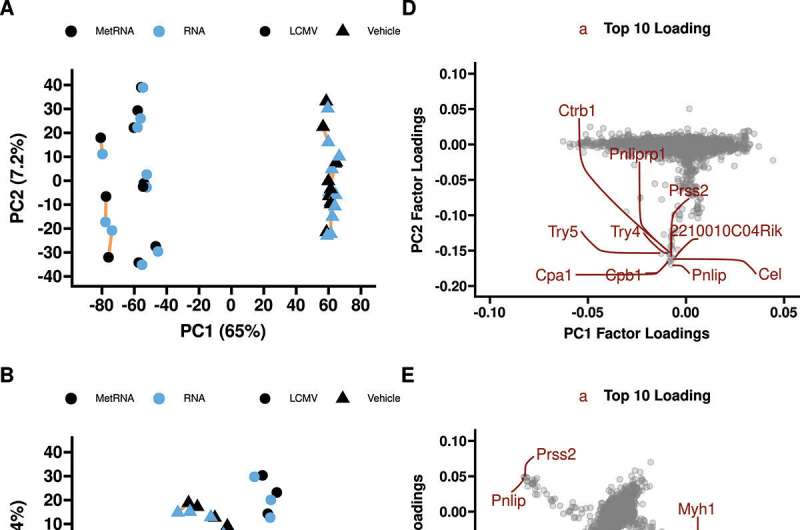This article has been reviewed according to Science X's editorial process and policies. Editors have highlighted the following attributes while ensuring the content's credibility:
fact-checked
trusted source
proofread
New RNA-seq, metabolomics protocol offers more efficient extraction that maintains data integrity

Van Andel Institute scientists have developed a new extraction protocol for RNA-seq and metabolomic analysis, offering a more complete picture of cellular activity than either technique on its own.
The protocol employs a streamlined extraction from a single sample, which reduces variation, improves efficiency, preserves data fidelity and maximizes use of precious biospecimens.
"Our new technique enables researchers to study metabolic phenotypes in a unique way while getting the most information we can out of single samples," said Ryan Sheldon, Ph.D., director of VAI's Mass Spectrometry Core. "The most important takeaway is there is no loss of information by using our new, more efficient protocol."
Until now, scientists have had to use two sample extractions—one for RNA-seq and one for metabolomics. This approach requires multiple samples or a single sample divided into subsamples, which increases variation and has an unknown impact on data interpretation.
The current workflow also can make multi-omics approaches challenging, especially in rare sample types; the extraction process destroys the sample, precluding additional analysis.
To validate the protocol, the research team compared results from the standard extraction to results from the new approach. The findings clearly showed the new protocol preserved data quality while saving time and resources.
The new protocol is published in the journal RNA Biology. It was developed by scientists in VAI's Core Technologies and Services and Department of Metabolism and Nutritional Programming. Core Technologies and Services provides state-of-the-art technologies and expertise to Institute scientists and collaborators.
"Our new strategy offers an important proof-of-concept for future efforts to incorporate additional-omics approaches, with the goal of creating a singular extraction pipeline for RNA-seq, metabolomics, proteomics, transcriptomics, and others," Sheldon said. "This work would not have been possible without the exceptional Core Technologies and Services team here at VAI and the Institute's commitment to collaboration and rigorous science."
More information: Zachary B Madaj et al, Prior metabolite extraction fully preserves RNAseq quality and enables integrative multi-'omics analysis of the liver metabolic response to viral infection, RNA Biology (2023). DOI: 10.1080/15476286.2023.2204586
Provided by Van Andel Research Institute




















